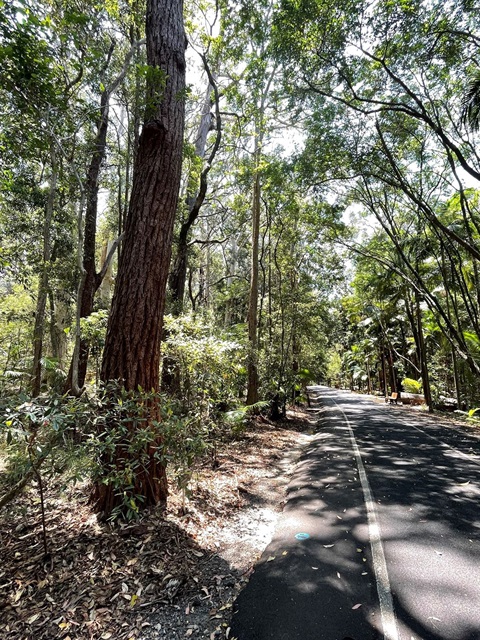Koala Feed Trees

Unveiling Coffs Harbour's Koala Dietary Preferences
Dietary preferences among koala populations vary, influenced by factors such as climate, soil type, and regional vegetation. Koalas have distinctive feeding habits, consuming approximately 500g of leaves daily. In Coffs Harbour, core feed trees for our local koala population include Tallowwoods, Grey Gums, Forest Oaks, and Swamp Mahoganys.
The Swamp Mahogany is a robust coastal tree (20-30 meters), that occurs in the region spans spanning from Rockhampton, Queensland, to Moruya, New South Wales. Flourishing in swamps and estuaries, it dominates NSW Swamp Sclerophyll Forests. Its stringy, red-brown bark and broad green leaves define its Eucalyptus identity. From March to September, it graces the region with white or cream-coloured flowers, attracting not only the koala (any time of year) but birds, flying-foxes, and arboreal mammals during its autumn-winter flowering.
In addition to these core feed trees, koalas strategically seek refuge in a diversity of tree species such as paperbark, she-oak, brush box, and acacia. This behaviour is particularly evident during the day and adverse weather conditions when these marsupials find comfort and shelter in the protective forks of trees. This blend of dietary selectivity and habitat adaptability showcases the intricate relationship between koalas and tree species that populate the Coffs Harbour region.
Interestingly, a koala’s diet revolves almost entirely around eucalyptus leaves. Koalas have a specialised digestive system that allows them to break down the tough and potentially toxic eucalypt leaves to extract nutrients. Eucalypt leaves are relatively low in protein and high in fiber, which suits the koala's unique digestive system. The digestive system of koalas includes a special chamber called the cecum (a two-meter-long tube branching from their intestines), where microbial fermentation aids in breaking down tough plant materials. This adaptation is crucial for their survival, allowing them to thrive on a diet that might be challenging for other herbivores. Despite the low energy content in their diet, koalas exhibit energy conservation strategies by sleeping during the day and foraging in the evening.
In the realm of hydration, koalas demonstrate an intriguing behaviour – they rarely drink water. Instead, they rely on the water contained in the fresh eucalyptus leaves they eat and any dew on them to meet their hydration needs. This unique approach to water consumption further emphasises their remarkable adaptations to the Australian landscape.
Understanding koala’s core feed trees in Coffs Harbour is vital for us on the mid-north coast. It enables us, as locals, to either plant these species or educate others about the trees essential for our iconic Australian species—the koala.
If you would like the chance to catch a glimpse of a koala and explore some of their core feed trees, make sure to pay a visit to the Coffs Harbour Botanic Garden (North Coast Regional Botanic Garden). Don't miss the Swamp Mahogany, Eucalyptus robusta, which you'll find along the main track with its distinctive sign (as shown in the photo). Grab the Our Habitat Our Homes guide at the Gardens' entrance or here�� to embark on a self-guided tour or join a guided tour to uncover nocturnal wildlife creatures, in a 'Night-Life Wildlife' Tour (More info below). Enjoy exploring, learning, and having a blast!
Photos: Swamp Mahogany on the main track in the Botanic Garden. - Go check it out!
Resources:
Koala habitat | NSW Environment and Heritage
Koala facts | Environment | Department of Environment and Science, Queensland (des.qld.gov.au)
A review of koala tree use across New South Wales (nsw.gov.au)
Visit - Centennial Parklands - Trees, shrubs & plants - Centennial Parklands
Crowd gathers to ‘free the trees’ in Bongil Bongil National Park - News Of The Area